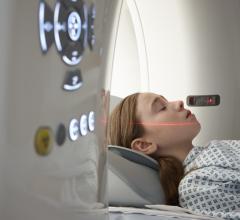
May 16, 2016 — Neuroimaging studies of interconnected brain networks may provide the "missing links" between behavioral and biological models of cognitive vulnerability to depression, according to a research review in the Harvard Review of Psychiatry. The journal is published by Wolters Kluwer.
Research on neural network interactions and related brain activity patterns has provided new insights into the thought processes that make some people vulnerable to depression, according to the update by Shuqiao Yao, Ph.D., of Central South University in Changsha, China, and colleagues. They believe this "neural system perspective" might help in clarifying cognitive vulnerability versus resilience to depression, perhaps leading to the development of new treatment approaches.
Cognitive (thinking-related) factors have a well-established impact on vulnerability to major depressive disorder. Cognitive processes involving rumination and "negatively biased" self-assessments are believed to be key factors contributing to the development of depression.
"Although it is generally accepted that cognitive factors contribute to the pathogenesis of major depressive disorder, there are missing links between behavioral and biological models of depression," Yao and coauthors wrote. "Advances in brain imaging, especially in the field of intrinsic neural network research, may provide a useful tool to identify the missing neural-behavioral links."
The authors discuss and analyze recent neuroimaging research on the "abnormal activities and interactions" within and between brain networks that may affect cognitive vulnerability. Studies have identified increased activity in one important brain network, called the default mode network (DMN), in people at risk for depression — for example, those with a family history of major depressive disorder.
This pattern of hyperactivity in the DMN may be the neural basis of the "maladaptive rumination" contributing to cognitive vulnerability to depression. There's also evidence that increased "functional connectivity" between the DMN and other brain networks may suppress activity in brain areas involved in generating a positive mood.
Increased activity (reduced suppression) of the DMN may make it difficult to "disengage from self-reflection" during tasks. This may line up with the behavioral theory that people vulnerable to depression develop "cognitive resource depletion" when trying to confront negative stimuli during the transition from rest to tasks. Abnormal network interactions, including impaired switching between networks, may contribute to cognitive difficulties leading to persistently depressed mood.
"A focus on interrelated networks and brain activity changes between rest-task transitions provides an approach for future research into inter-individual differences in vulnerability and resilience," Yao and co-authors conclude. They emphasize that many basic questions remain to be answered, including clarifying the mechanisms by which the networks interact with each other.
The neural system framework may also help to explain how specific forms of psychotherapy — such as cognitive-behavioral or mindfulness therapy — are clinically effective for patients with depression. As research continues, Yao and colleagues foresee a "paradigmatic shift" in studying cognitive vulnerability to depression — with the potential to lead to new, targeted interventions for major depressive disorder.
For more information: www.journals.lww.com


 July 25, 2024
July 25, 2024 








